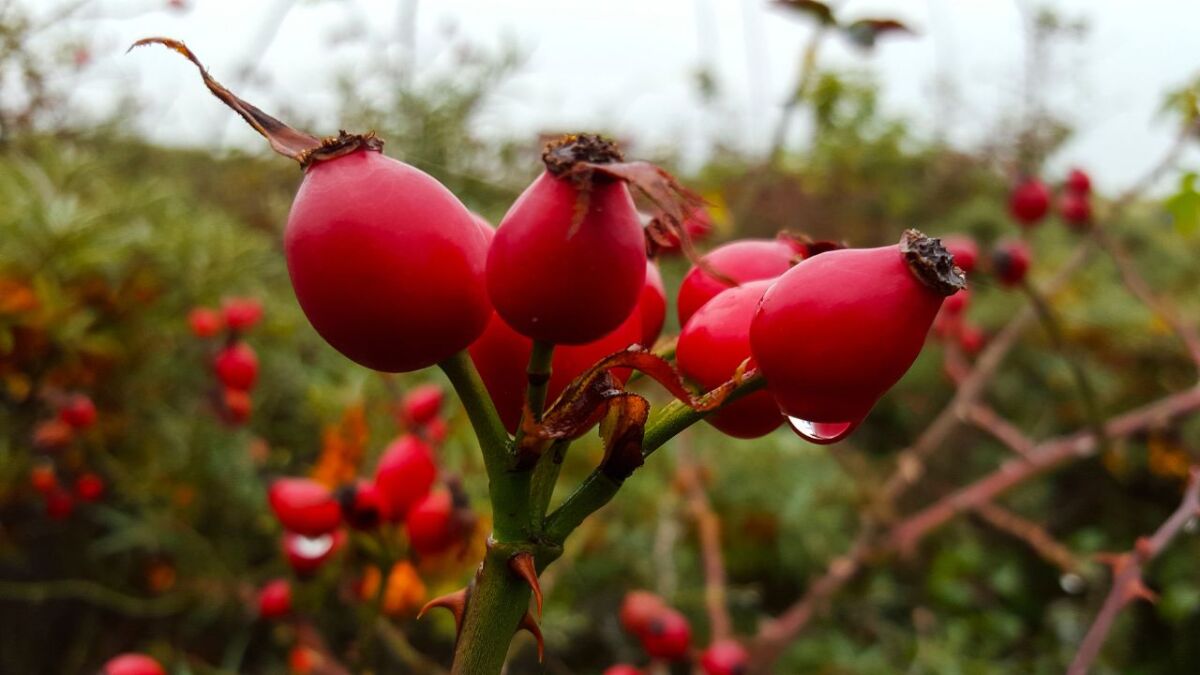
The rose hip – how to harvest and process the underrated vitamin C bombs (+recipes)
👉 The key facts from this guide
- The rosehip is rich in vitamin C, B, and other nutrients and has health-promoting properties.
- The healing effects of the rosehip include cardiovascular diseases, osteoarthritis, rheumatism, urinary tract infections, fever, and colds.
- Rosehips can be processed into tea, jam, purée, ointments, and creams.
- Allergy sufferers should wear gloves when collecting and processing rosehips to avoid skin reactions.
- Rosehip oil can be used for skin care as it has anti-inflammatory properties and promotes skin regeneration.
- The rosehip is a good source of emergency food in the winter and can be useful in many outdoor survival situations.
The flora in our regions produces so many wonderful plants that it is almost impossible to count them all.
To make these plants usable for us as well, it is essential to familiarize ourselves with them and learn some helpful things about them.
In this guide, I want to introduce you to the rose hip, which not only has a health-promoting effect.
It also has some properties in the kitchen that make it a plant with tremendous added value for you.
Here you will learn how to identify it, how it works, and above all, how to use the full potential of this natural treasure.
Rose hip - fever-reducing food source
A man stands in the forest… but he is not silent.
It’s quite lively around the rose hip, one of the most well-known native medicinal plants.
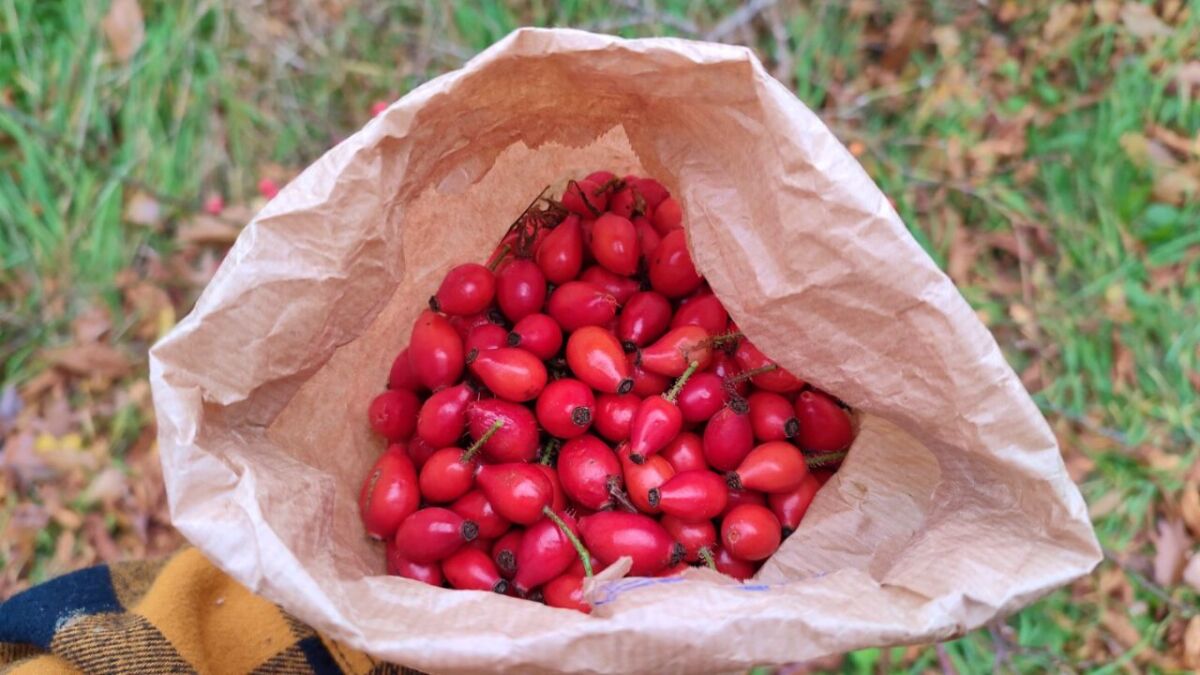
Its bright red fruits are on display from late summer to early winter. And when it gets chilly and inhospitable outside, there are connoisseurs in nature who ensure that the rose hip bushes are emptied.
Believe it or not, 27 native bird species as well as some exotics find the taste of the small red fruits of the wild rose irresistible.
This includes not just the fruits of the dog rose, but almost all wild rose species, as well as garden roses.
The rose hip is not a real fruit, but rather a pseudofruit of the dog rose, Rosa canina.
However, its high content of vitamin C and B, as well as numerous nutrients, make it valuable not only for the small fence guests.
Even the ancient Persians knew a long time ago about the healing power of rose hips and cultivated the shrub. In medieval Europe, it was a permanent fixture in the kitchen and was mainly grown in monastery gardens due to its numerous healing properties.
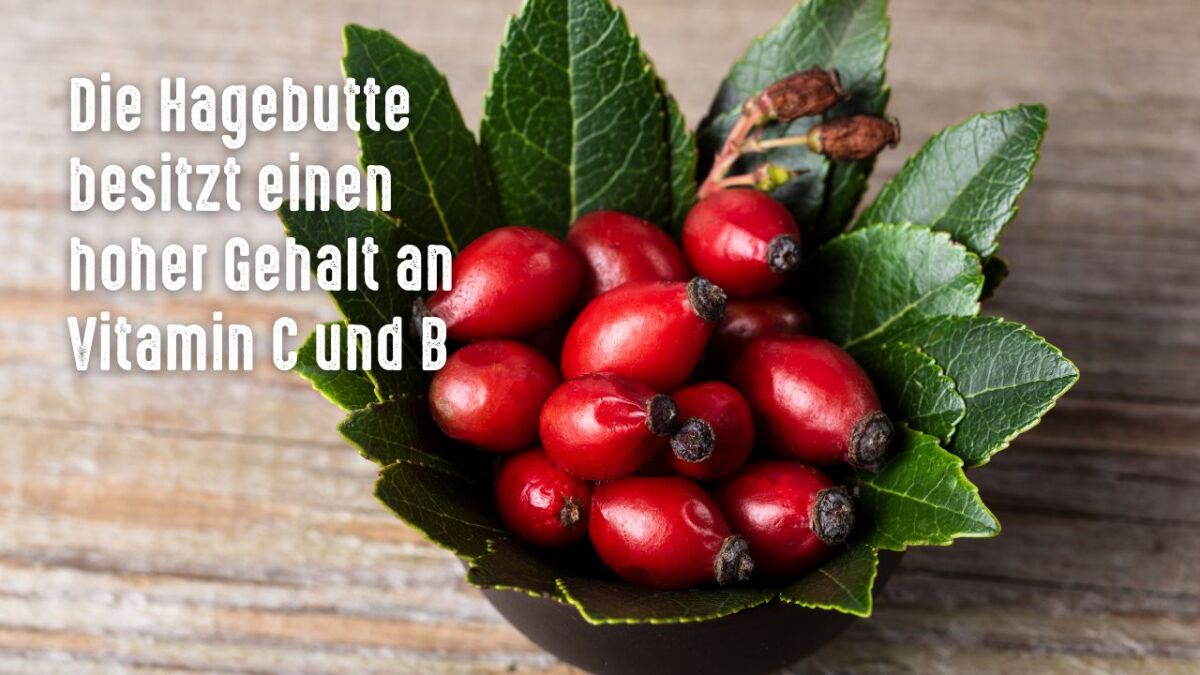
Mode of Action and Areas of Application
Just eating a few fruits alone meets the daily requirement of vitamin C for an adult.
With an absolute record content of up to 3000 mg of vitamin C per 100 grams, rose hips rightly hold the first place among the superheroes of the plant world.
Vitamin C is the most effective means against infections, especially against flu and colds. Consequently, rose hips are an excellent way to strengthen your immune system and regenerate your body after illnesses.
Proven healing effects can be found in:
- cardiovascular diseases
- osteoarthritis
- rheumatism
- urinary tract disorders
- as a fever-reducing agent
- as well as in colds
Especially children prefer honey-sweetened rose hip tea to conventional medicine, and since chemistry is known to be consumed with caution, this natural remedy is also more tolerable for our organism.

Rose hips are also helpful in gum inflammation and mood swings. Based on homemade ointments and creams, we also do something good for our skin due to the vitamin C content.
Furthermore, the small red power fruit is a proven home remedy for itchy or scaly scalp.
However, there are some things to consider when collecting, preserving and processing rose hips
Obtaining rose hips is not as easy as you may think.
For one thing, it is a member of the rose family. As we all know, roses have thorns that can hurt you. However, that is not the only defense mechanism of the rose hip.
If you have ever had itching powder under your shirt as a child, you know what I am talking about.

The seeds of the rose hip have hairs with tiny barbs that cause itching and burning.
In nature, these hairs serve a different purpose. Birds do not digest the seeds and therefore excrete them, which helps spread the rose hip.
It is a necessity for rose hips to survive.
Unfortunately, this does not change the fact that it can be quite unpleasant and that some people are allergic to it.
Therefore, if you are allergic, you should wear gloves when collecting, but more importantly, when processing rose hips.
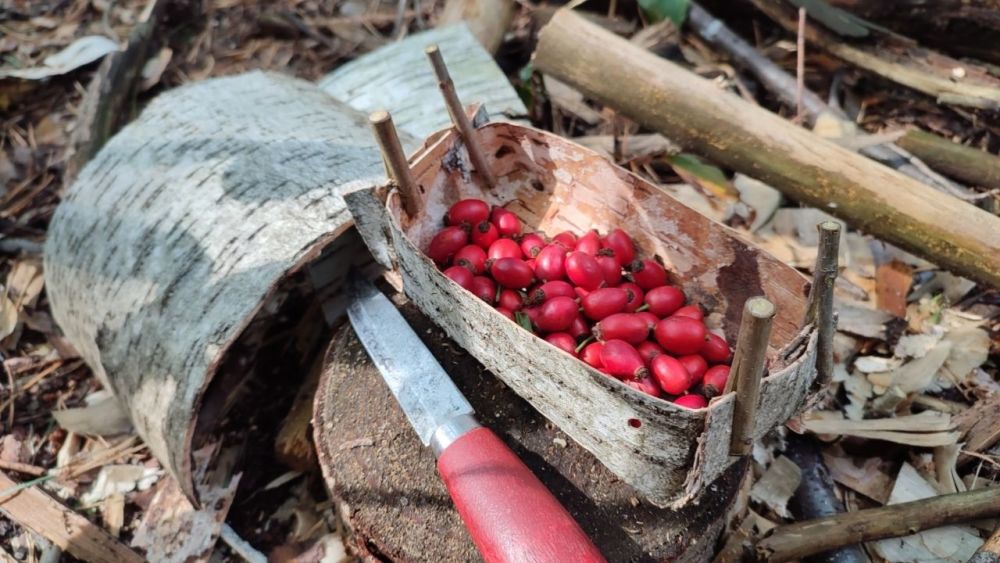
When processing rose hips, they are first washed, dried and then halved.
Now is the time to get rid of the annoying seeds. It is best to scrape them out with the handle of a spoon so as not to damage the flesh further. Because everything about it is valuable and full of vitamins.
Once you have removed the cores, it's time for the actual processing.
Of course, what you want to do with them depends on your preferences. The preparation can vary from adding them to healing supplements, making jam, tea, purée, rose hip pulp, compote, or juice.
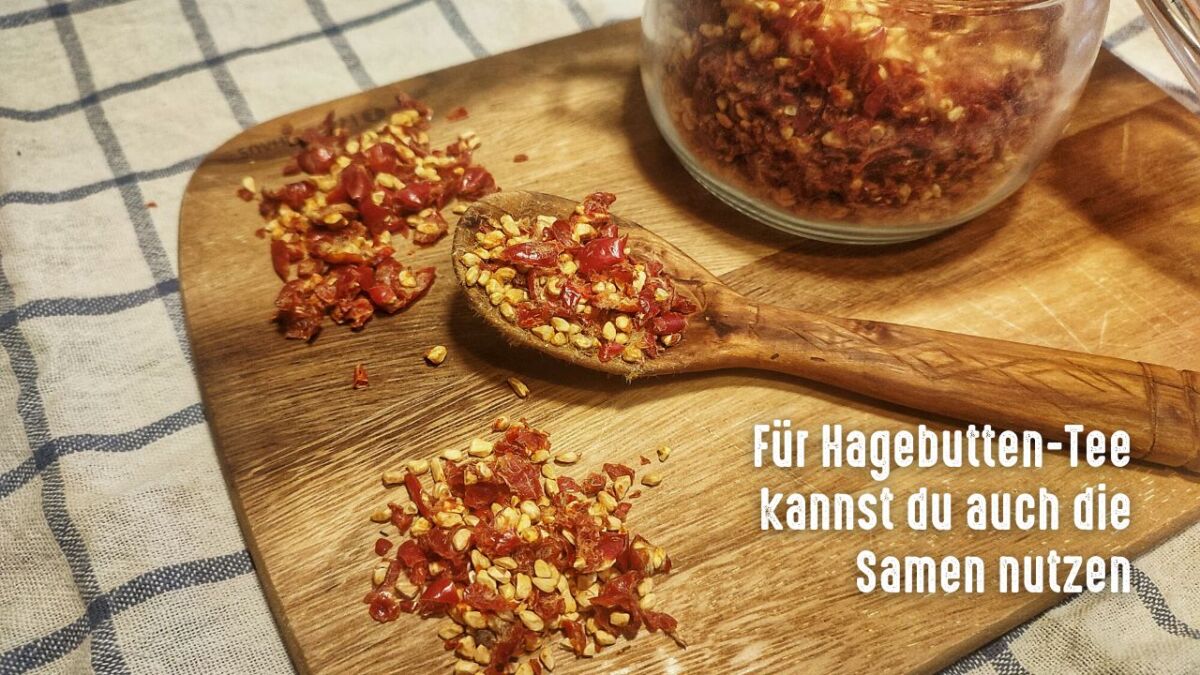
But also keep in mind that some people – like me – also consume the seeds in their tea. They're believed to have healing properties, too. After drying and adding hot water, the hair becomes ineffective. Plus, the seeds are already in the tea bag.
To get really creative with your rose hips, the next section provides some tips and recipes on how to preserve and prepare them.
How can I dry rose hips?
To make rose hips last longer, you first need to dry the chopped rose hips for storage.
Drying them on several layers of paper towels in the sun works well. However, choose a day that isn't too windy. Another suitable alternative is using the oven or a food dehydrator.
The heat in the oven shouldn't exceed 40 degrees Celsius. It's important to dry them gently, so the vitamins don't get lost.
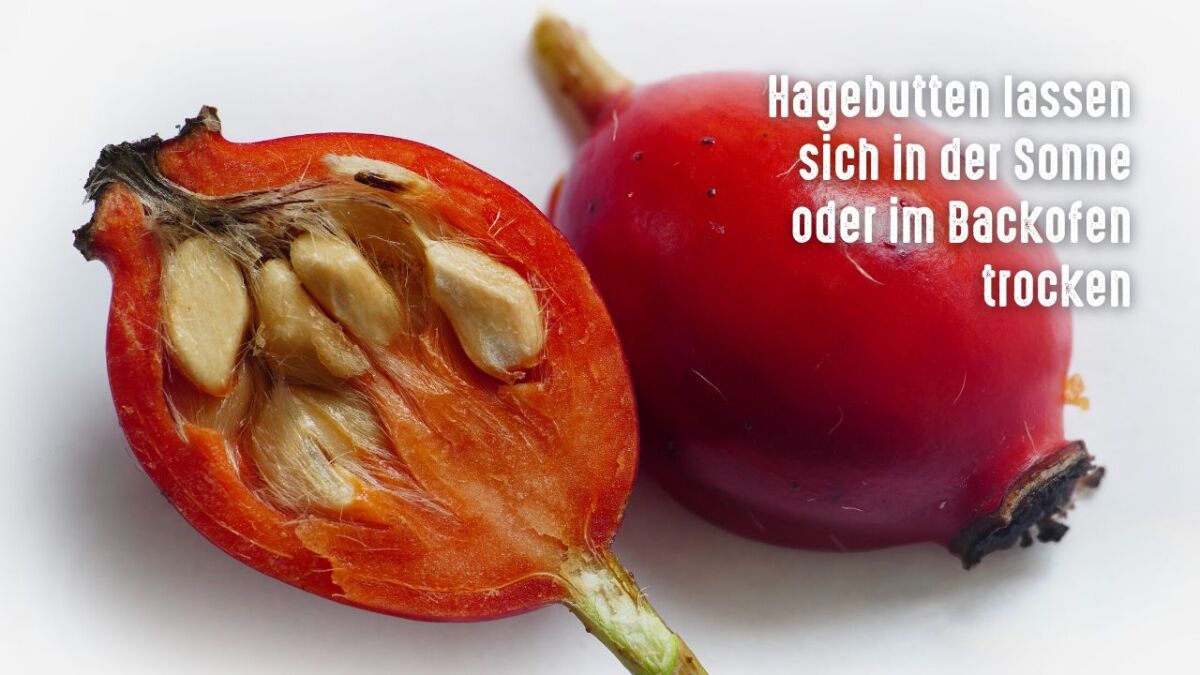
Since the chopped rose hips still have some weight, they won't fly around on the baking tray, even when using convection. Alternatively, you can simply leave the oven door slightly open and place a wooden spoon in between to dry them at 40 degrees Celsius.
The process of drying in the oven takes between 3 and 5 hours. Let the rose hips cool down before removing them, and then fill them into jars.
When dried, they can also be further processed into a fine powder with a mixer, mortar, and pestle. This can be portioned well and used in various ways.
As a vitamin boost in a smoothie or on cereal, rose hip powder is a great thing. Stirred into yogurt or quark, it greatly enhances its flavor. The dried fruit can also be easily added to cereal.
Producing creams from rose hips
Rose hip cream has the following effects:
- heals wounds
- anti-inflammatory
- eases inflamed joints, rheumatism, osteoarthritis
- antioxidant and skin-regenerating for:
- scars
- wounds
- eczema
- skin inflammations
- acne
- skin irritations
- sun damage
- signs of aging
To produce a rose hip cream, in addition to the fruit, you will need two to three more ingredients and a sieve or cotton cloth (muslin).
Firstly, choose a carrier oil. This can be jojoba or olive oil, or another oil such as coconut oil. Bear in mind that the type of oil will affect the consistency of the cream.
Another good ingredient for a cream is pure beeswax. At this point, I would advise against online purchases from wholesalers. Buying online is fine, but it should always be from a private beekeeper.
Although the beeswax may be slightly pricier, you will receive quality and can be sure that your beeswax is free of chemicals. You'll also be supporting the industry.

Now cut the de-seeded rose hips into smaller pieces and slowly heat them, on low heat, together with the carrier oil.
After about 20 minutes, turn the heat all the way down and let the oil cool. Now you'll need some patience because ideally the oil should rest covered overnight, so it can absorb the ingredients of the rose hips.
The following day, place the cotton cloth over a bowl and carefully pour in the rose hip oil. This way, it will be filtered from any rough residues.
During the same step, also squeeze out the remaining oil from the fruits. The filtered oil is now heated again on the stove.
The beeswax is now also stirred in and dissolved. When the oil and wax are well mixed, remove it from the stove and fill it into sealable jars or ointment boxes, which you can get at pharmacies or online stores.
Now your ointment is finished and ready to cool down.
Don't forget to label the whole thing with a date and store the ointment in a cool place, as oil tends to show unpleasant properties such as odor and consistency changes when exposed to heat.
Making tea from rose hips
Rose hips are the fruit of the rose plant and can be used to make tea. To prepare rose hip tea, first collect some rose hips.
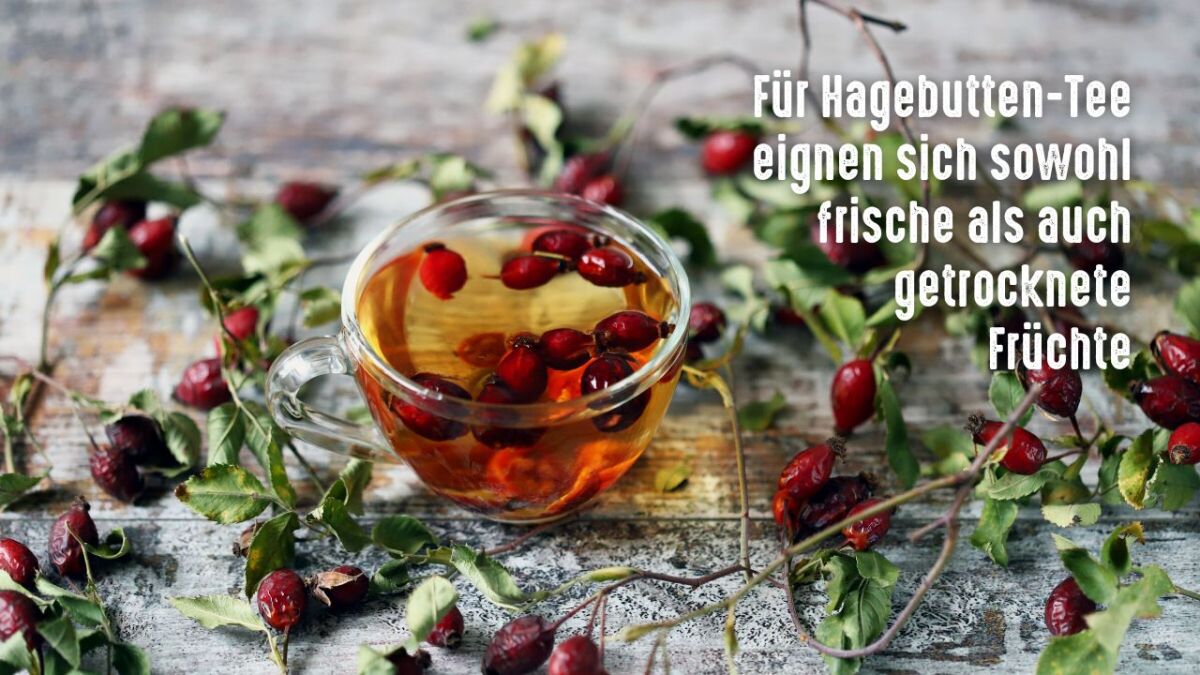
Wash the rose hips and then cut them in half. Place them in a pot with boiling water and let them steep for about 10 minutes. After 10 minutes, you can remove the rose hips and enjoy your tea.
If you want to store rose hips for your tea, you have to dry the collected rose hips.
How to make Rose Hip Jam
Another reason for harvesting rose hips is that you can make a delicious jam from it.
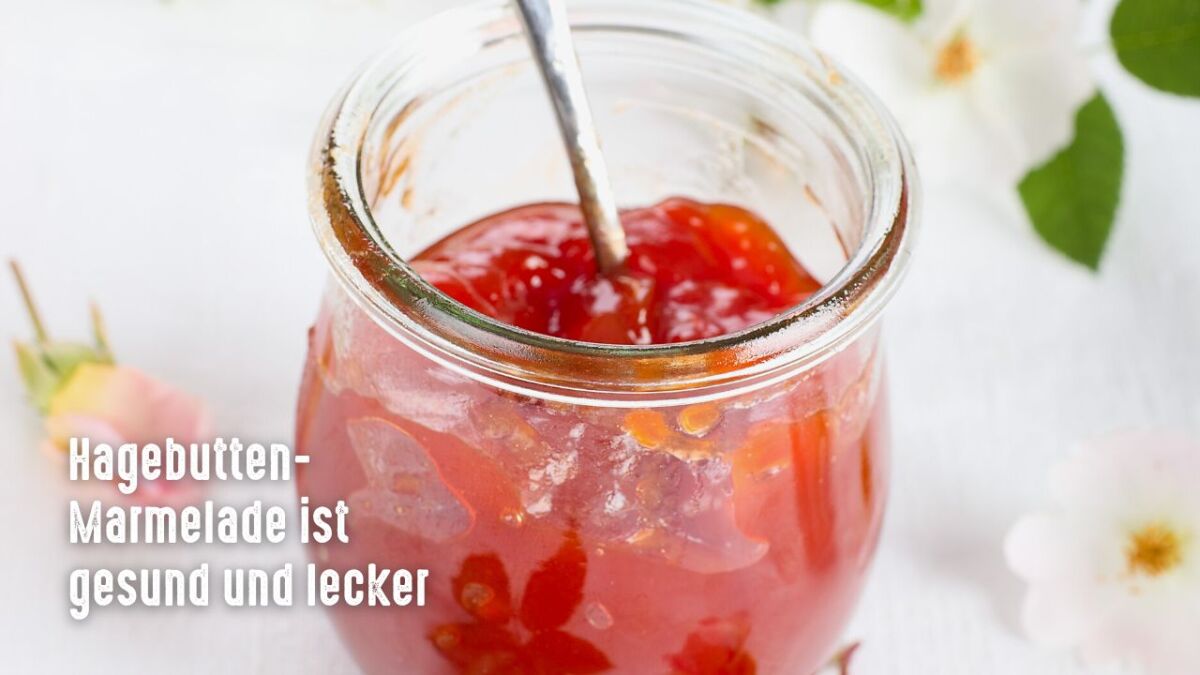
Bought rose hip jam has never been my favorite. I simply find the taste too artificial. Homemade jam, on the other hand, is a poem.
With the jam, you can proceed as you would with any other fruit: 1 kg of fruit requires 1 kg of preserving sugar or an alternative without industrial sugar.
Cook the finely chopped rose hips with the gelling agent until the desired consistency is achieved, and fill into glasses.
The rose hips can also be processed into jam with a variety of fruits. Pear and apple or blackberries go well with it.
You are welcome to experiment a little. Since everything is ready for harvesting at the same time, there are no limits to your creativity.
Mash is a Must
If rose hips are harvested after the first frost, they are softer and easier to process. This state is simulated by freezing, so it is recommended to put the rose hips in the freezer overnight.
This also has a time and electricity-saving effect, as frozen fruits shorten the cooking time.
If you want to process the rose hips whole, you first have to purée them after softening and then strain them through a sieve. With cut and pitted fruits, the last step is omitted. Then let the mash cool down well.
It is now durable in the refrigerator for up to 5 days. If you preserve it, it can last up to two years.
The rose hip purée is just as versatile as the powder. It can be used to make a tasty sauce for all kinds of salads, as well as in sauces for meat and game dishes. Sweetened, the purée enhances desserts or ice cream.
Important fact: Two tablespoons of rose hip purée provide your entire daily requirement of vitamin C. Therefore, it makes sense to have a small stock for the winter months.
Beauty knowledge from ancient times
You may be familiar with old paintings where you always think, "the artist exaggerated!".
What if that's not the case and the flawless porcelain skin is not the fantasy of an overzealous brushstroke?
You should know that the rose hip has been considered a secret to beautiful skin for thousands of years. No, your eyes are not deceiving you. This fruit is a small miracle.
In addition to the vitamins already described, it contains a secondary plant substance with the melodious name Galaktolopid.
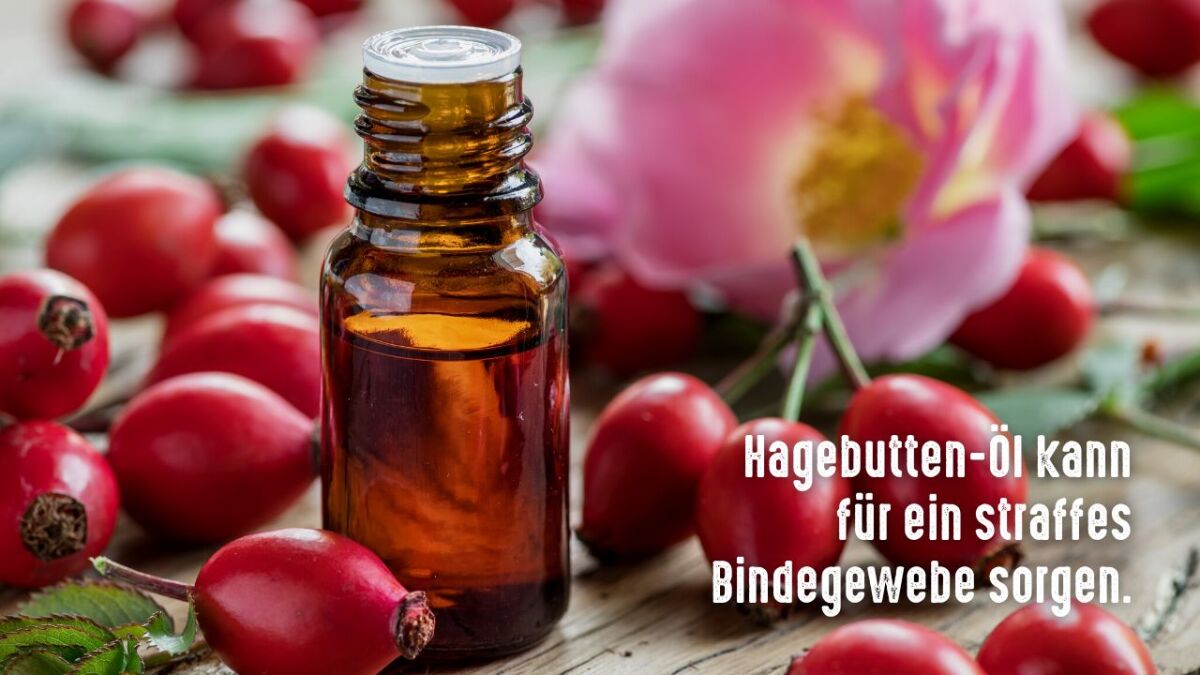
This helps the skin to produce new collagen, which is significant for firm connective tissue. It mostly helps the skin to regenerate its cells faster. In addition, the rose hip repairs your wrinkles due to its high vitamin C content.
Since it also regulates the skin's sebum production naturally, the skin can absorb and store moisture better, giving it a youthful and fresh appearance.
In commercial products, such as creams and ointments, the addition of rose hip oil is usually so small that they only show effectiveness in name. In reality, however, the placebo effect is absent.
If you make the ointment yourself, you not only save your nerves because, once again, a product doesn't keep its promises, but you also save your wallet.
If you also support your body from the inside with the vitamin C of the rose hips, you are well advised.
Survival Skills of Rose Hips
Rose hips are a good source of food that can be extremely helpful in many emergencies. Although they are not particularly tasty raw, they provide the body with important nutrients and can satisfy extreme hunger due to their high sugar content.
Rose hips are also a good source of vitamin C, which in turn helps keep the immune system running in an emergency. And it's amazing that you can find them almost all over Europe, making them wonderful emergency food in winter.
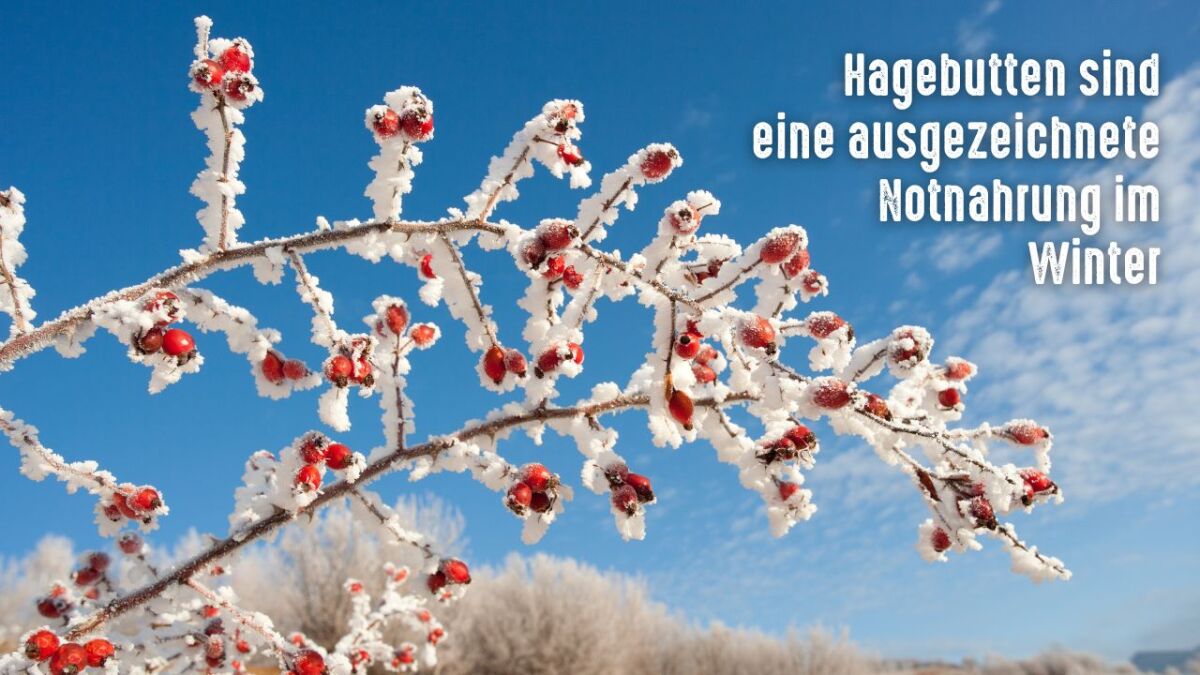
Questions and Answers About Rose Hips
Are rose hips toxic or edible?
Rose hips are the fruit of the rose bush. They are usually red, but can also be orange, yellow, or white. The flesh is edible, but you should not eat the seeds raw. Raw rose hips contain a lot of vitamin C and are traditionally used to strengthen the immune system.
Are rose hips healthy?
Rose hips are the fruit of the rose plant and are often used to make tea, jam, and other products. They are a good source of vitamins A, C, and E, as well as various other minerals. Rose hips also contain Galaktolopid, which is attributed with anti-inflammatory effects. Some studies have shown that rose hip tea can alleviate the symptoms of osteoarthritis and rheumatism.
When is the best time to harvest rose hips?
The best time to harvest rose hips is in the autumn, after the first frost. The fruits are then plump and full of flavor. You can use the fruits to make rose hip jam or purée.
How do I recognize rose hips?
Rose hips are recognized by the small, round fruits of the shrub. These fruits are mostly red, but can also be orange or yellow. The fruits grow on the leaves of the shrub, which are often green. To determine if a fruit is a rose hip, cut it open. If the inside of the fruit is red and there are light seeds with hairs, it is a rose hip.

What is rose hip oil, and how does it affect the skin?
Rose hip oil is a fatty oil extracted from the seeds (nuts) of the rose hip, a wild rose bush. This oil has been used for centuries in folk medicine for its numerous healing properties. Rose hip oil is rich in essential fatty acids, vitamins, and minerals, making it ideal for skin care and revitalization. It is also said to help reduce the appearance of scars and wrinkles.
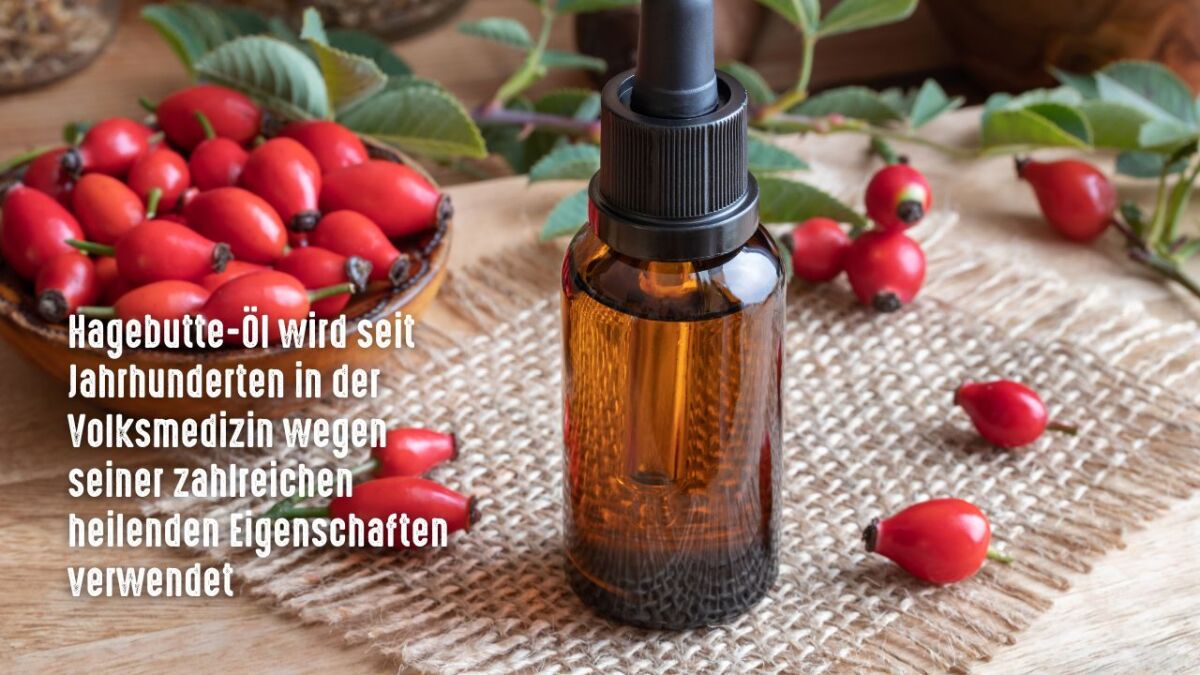
Conclusion on Rose Hips: A vitamin C Wonder with Many Talents
You can see that there are plants whose true nature could fill entire novels. And while we're on the subject of nature, isn't it wonderful what the rose hip offers us?
The rose hip is by no means the only plant that has a talent for almost everything.
Only recently, I read a very interesting statement about rose hips, with which I fully agree.
If rose hips were not native, but instead discovered as a new superfood on a distant continent, they would come at a high cost in the market.
So take the chance and grab some of our local wild plants that may be right around the corner from you.
Have fun discovering the local rose hip.
P. S.
In line with this, I have two guides that could save your life in the summer and winter.
You should read about emergency food in the forest. You will also find enough food in the winter if you know where to look.


Author of the guide
Martin Gebhardt
Hey, I'm Martin. On my blog, you will learn the basics and numerous details about living in the wild. I think survival, bushcraft and the good life in nature are the keys to happiness. Find me here on Instagram or on YouTube. You can find more about my mission on the About Me page.
Was this guide helpful?
29 people found this guide helpful.
5.00 out of 5 points (29 Ratings)
Comments (0)
This post may contain affiliate links. So if you click on the links and make a purchase, I will receive a small commission at no additional cost to you. Click here, to learn more about it.


